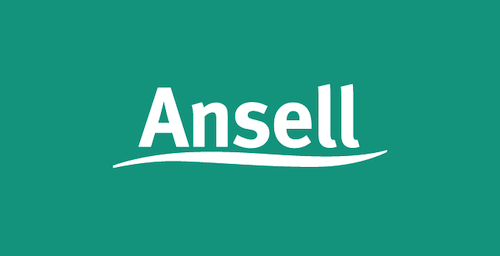Alan Condon
CMS has updated guidance for hospitals interested in converting to a rural emergency hospital, a Medicare designation that was made available Jan. 1, 2023.
REHs are a provider type established by the Consolidated Appropriations Act, 2021, to address concerns over rural hospital closures and provide rural facilities a potential alternative to closure.
Since 2005, 106 rural hospitals have shut down, with another 86 facilities no longer providing inpatient services, according to data compiled by the University of North Carolina’s Cecil G. Sheps Center for Health Services Research. Of those, 37 closures have occurred since 2020.
Here are 16 things to know about REHs, including designation requirements, qualifying facilities, conditions of participation and how many hospitals have converted to REHs.
1. The designation aims to curb rural hospital closures by offering them a chance to close infrequently used inpatient beds and focus on outpatient and emergency department services.
2. CMS defines “rural emergency hospitals” as “facilities that convert from either a critical access hospital or a rural hospital with no more than 50 beds and do not provide acute care inpatient services, with the exception of post-hospital extended care services furnished in a distinct part unit licensed as a skilled-nursing facility.”
3. In exchange for giving up their expensive inpatient beds and focusing solely on emergency and outpatient care, rural emergency hospitals receive a 5% increase in Medicare payments as well as an average facility fee payment of about $3.2 million a year.
4. Conversion to the designation allows hospitals to continue providing emergency services, observation care and, if elected by the hospital, additional medical and health outpatient services, that do not exceed an annual per-patient average of 24 hours.
5. REH services include all covered outpatient department services required or elected to be provided by the REH, including relevant radiology, laboratory, outpatient rehabilitation, surgical, maternal health, and behavioral health. Copayments for REH services are based on the standard Hospital Outpatient Prospective Payment System rate (excluding the 5% increase).
What facilities qualify to be a REH?
6. Eligible CAHs and small rural hospitals can apply to enroll as REHs for free. Existing CAH or hospital enrollment ends once REH enrollment is approved.
7. A facility must meet the following requirements to qualify as an REH:
- Enrolled in Medicare; and operating as a CAH as of Dec. 27, 2020; or operating as a small rural acute care, tribally operated, or Indian Health hospitals with no more than 50 certified beds as of Dec. 27, 2020, and either located in a rural county or treated as being located in a rural area.
- Facilities that were enrolled by Dec. 27, 2020, but closed after that date, can still qualify if they re-enroll in Medicare and meet REH requirements.
What requirements must REHs meet?
8. Once enrolled as an REH, a facility must meet the following requirements:
- Must not exceed an annual per patient average length of stay of 24 hours of services.
- Must meet staff training and personnel requirements, which include:
- A staffed emergency department 24 hours a day, 7 days a week, with staffing requirements like those for CAHs
- A physician, nurse practitioner, clinical nurse specialist, or physician assistant available to provide REH services in the facility 24 hours a day.
- Must have a transfer agreement in effect with a Medicare-certified Level I or Level II trauma center.
- Must not provide any inpatient services, except those delivered in a distinct part unit licensed as a skilled nursing facility.
9. Conditions of participation include:
- Hospitals must have a clinician on-call at all times and available on-site within 30 or 60 minutes depending on if the facility is located in a frontier area.
- Emergency departments must be staffed 24 hours a day, seven days a week by an individual competent in the skills needed to address emergency medical care. This individual must be able to receive patients and activate the appropriate medical resources to meet the care needed by the patient.
- Hospitals must develop, implement and maintain an effective, hospital-wide, data-driven quality assurance and performance improvement program, and it must address outcome indicators related to staffing.
- The annual per-patient average lengths of stay cannot exceed 24 hours and time calculation begins with registration, check-in or triage of the patient and ends with the discharge of the patient from the hospital.
- Hospitals must have an infection prevention and control and antibiotic stewardship program that adheres to nationally recognized guidelines.
How many hospitals have converted to REHs?
10. Thirty-two hospitals have transitioned to the REH designation so far:
Arkansas
Eureka Springs Hospital
Helena Regional Medical Center
South Mississippi County Regional Medical Center (Osceola)
St. Bernards Five Rivers Medical Center (Pocahontas)
Georgia
Blue Ridge Medical Center
Irwin County Hospital (Ocilla)
Taylor Regional Hospital (Hawkinsville)
Kansas
Mercy Hospital (Moundridge)
South Central Kansas Medical Center (Arkansas City)
Kentucky
Crittenden Community Hospital (Marion)
Louisiana
Assumption Community Hospital (Napoleonville)
Michigan
Sturgis Hospital
Minnesota
Mahnomen Health Center
Mississippi
Alliance Healthcare System (Holly Springs)
Green County Hospital (Leakesville)
Jefferson County Hospital (Fayette)
Panola Medical Center (Batesville)
Perry County General Hospital (Richton)
Sharkey Issaquena Community Hospital (Rolling Fork)
Missouri
Parkland Health Center (Bonne Terre)
Nebraska
Friend Community Healthcare System
New Mexico
Guadalupe County Hospital (Santa Rosa)
Oklahoma
Elkview General Hospital (Hobart)
Harper County Community Hospital (Buffalo)
Stillwater Medical-Blackwell
Stillwater Medical-Perry
Tennessee
Tristar Ashland City Medical Center
Texas
Anson General Hospital
Crosbyton Clinic Hospital
Falls Community Hospital and Clinic (Marlin)
St. Luke’s Health-Memorial Hospital – San Augustine
St. Mark’s Medical Center (La Grange)
11. The REH program is still very new, but more rural hospitals are pursuing the designation after doing financial analyses and seeing the progress made by some of the program’s inaugural class.
Insights from five rural hospital leaders
12. Brooke Kensinger, CEO, MercyOne Elkader (Iowa) Medical Center: The REH program is still very new, and just as it took time for the hospital community to warm up to the critical access hospital designation, this will be no different. Hospital leaders and community boards are learning more about the pros and cons of this option, and whether it is truly the best path at this time for their community. We expect that as healthcare leaders and board members across the country continue to evaluate this program, there will be improvements made — similar to the CAH program — to better ensure access to care.
13. Dierdra Sorrell, MSN, RN, CEO, Clifton-Fine (Star Lake, N.Y.): For our hospital, with an inpatient census of one for the most part, [the REH designation] made a whole lot of sense. We really struggle with getting the inpatient census since we’re in a very remote location and the closest hospital to us is about a 50-minute drive.
14. Anna Doan, BSN, RN, Chief Nursing Officer, Anson (Texas) General Hospital: Our [inpatient] numbers drastically declined, and we knew that this was our only hope to stay open.
15. Donald Lloyd, II, President and CEO, St. Claire Healthcare (Morehead, Ky.): We must realize that it is not economically possible to sustain a full service acute care hospital in every rural community. Such a realization takes great political courage but also clinical creativity to meet the community’s needs. CMS and state Medicaid agencies must establish payment methodologies that sustain institutions in low volume and safety-net environments.
16. Jeff Thompson, MD, CEO Emeritus, Gundersen Health System (La Crosse, Wis.): Although more rapidly changing the payment system away from fee-for-service will help, the best hope and most progress is to change the behavior of the large systems and universities to view rural areas not as referral pipelines but as citizens and providers that need real population healthcare partners. Not closing, but re-focusing the work of rural providers and rural hospitals that have already been shifting to outpatient work [will help].
CMS updates guidance for rural emergency hospitals: 16 things to know (beckershospitalreview.com)









